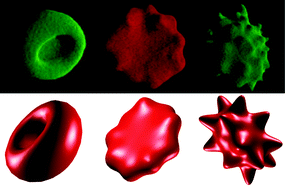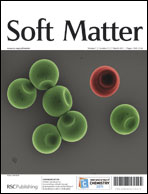An important open question in biophysics is to understand how mechanical forces shape membrane-bounded cells and their organelles. A general solution to this problem is to calculate the bending energy of an arbitrarily shaped membrane surface, which can include both lipids and cytoskeletal proteins, and minimize the energy subject to all mechanical constraints. However, the calculations are difficult to perform, especially for shapes that do not possess axial symmetry. We show that the spherical harmonics parameterization (SHP) provides an analytic description of shape that can be used to quickly and reliably calculate minimum energy shapes of both symmetric and asymmetric surfaces. Using this method, we probe the entire set of shapes predicted by the bilayer couple model, unifying work based on different computational approaches, and providing additional details of the transitions between different shape classes. In addition, we present new minimum-energy morphologies based on non-linear models of membrane skeletal elasticity that closely mimic extreme shapes of red blood cells. The SHP thus provides a versatile shape description that can be used to investigate forces that shape cells.

This article is Open Access
 Please wait while we load your content...
Something went wrong. Try again?
Please wait while we load your content...
Something went wrong. Try again?


 Please wait while we load your content...
Please wait while we load your content...